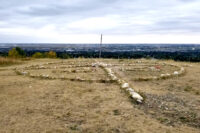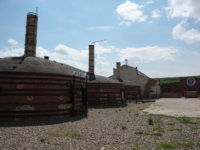Water management critically important for southern Alberta
By Dale Woodard - Lethbridge Herald on January 22, 2022.
Water competition and conflict was the topic the Southern Alberta Council on Public Affairs dove into during its online session Thursday.
Heading up the discussion was Dr. Dena McMartin, an environmental and agricultural engineer, faculty member and vice-president (research) at the University of Lethbridge, discussing the challenges, constraints and competing interests that are making water management increasingly difficult and important for southern Alberta.
“Research needs to take place to help us get to an understanding to avoid significant conflict with American colleagues and to ensure we have the water resources we need in southern Alberta to support our economies, our livelihoods, living organisms, recreation, nature and all of the things we value in southern Alberta and the unique situations we have here,” said McMartin.
At the end of 2021 the International Joint Commission appointed a study board for a four-year study to look at the St. Mary and Milk River systems incorporating potential climate change, implementing and including Blackfoot consultation, doing significant technical resource work around the ecological needs of the region as well as what a natural flow regime really looks like.
“This is going to be significant work,” said McMartin. “It will take a lot of deep conversations and I’m sure some very difficult conversations about how we better share these resources across international boundaries.”
McMartin is one of the three Canadian members on the study board.
“We know that water as a scarce resource and a precious resource is going to require a lot of consultation, we need to hear feedback and we need to know what people are really concerned about,” said McMartin.
The importance of the St. Mary and Milk rivers to Alberta is, in large part, due to specialty irrigated crops, said McMartin.Â
“We are Canada’s premier food production corridor. The water use is extremely efficient, well managed, very responsible and appropriately used, but it is a lot. So we have to have a clear understanding to make sure we’re balancing the competing needs, particularly as there is growth, not only in agri-food, but in processing and also other industries in population growth and livestock activities. Plus, we all like our lakes and rivers to be full for recreational purposes and for aesthetic reasons as well as other living organisms who rely on water as well.”
In Alberta, the St. Mary and the Milk Rivers are responsible for about 1.6 million acres of irrigated area, said McMartin.
“It does represent the most intensive irrigation area in western Canada and the area between Lethbridge and Medicine Hat is the most intensive irrigation area in Canada.”
It’s 1.6 million acres in Alberta, but only 141 acres of irrigation in Montana, said McMartin.
“As you can imagine, our American colleagues and partners are very interested in expanding irrigation and trying to secure and stabilize their agricultural economies as well.”
This is where part of the challenge begins to form between the two countries, said McMartin.Â
“There is a feeling Canada is taking too much of the water out of these watersheds and making good use of it, but more of it should be staying or being diverted back into the United States.”
McMartin explored how to maintain a sustainable environment, economy and socio-cultural priorities in the context of a changing climate and knowing that communities and economies are shifting and changing toward new economic opportunities and drivers.
“How do we ensure that we have deliberate design as scientists, engineers and social scientists to better understand how we’re going to use this very precious and vital resource in the best ways for the most impact for the most people, keeping our design for sustainability and living systems as a core principle in the decisions we make?”
The University of Lethbridge does some interesting work in this area, she said.
“The work we’re doing here focused on the southern Alberta food corridor really is looking at the entire value chain of water use in agriculture across the region. We’re looking at everything from hydrology, terrestrial imaging and data sciences. How do we use large bundles of data to make informed decisions about water resources?”
McMartin said the university is also doing a lot of work with irrigation around specialty crops, looking at which crops grow best in our climate under irrigation and provide value add for both processors as well as a good return on investments.Â
“So we’re making best use of the limited, scarce resource we have,” she said.
Follow @DWoodardHerald on Twitter
3-2




